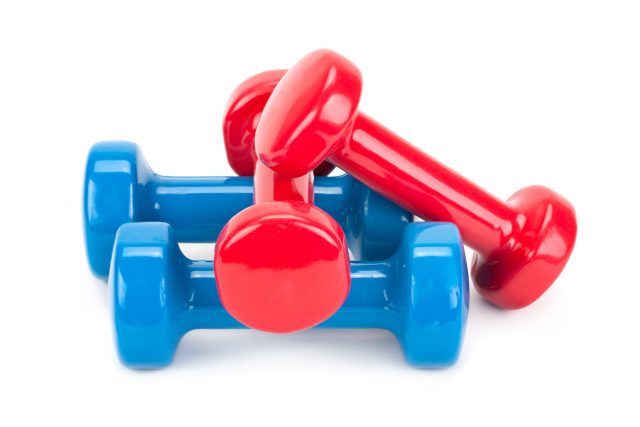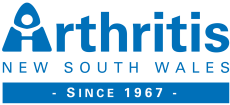Q: I’m wanting to do some strength training but I’m not sure what weights to start on or how many reps I should be doing?
A: Understanding the principles of fitness can help you make informed decisions about exercise frequency, intensity, time and type – including what weights and reps to start on.
Thank you for this great question! It’s a really valid point and from experience, I’ve found many people and past clients of mine don’t understand or even know of the basic principles of fitness. Because of this, they don’t know where to start, get frustrated, too fatigued and lose motivation and/or injure themselves. These unfortunate outcomes create barriers to their fitness journey and it can often mean they take longer to re-engage in regular exercise. Understanding the principles of fitness will help you make wiser choices about how you exercise and hopefully help you form sustainable exercise habits going forward.
 There are 5 main principles of fitness that you should be aware of:
There are 5 main principles of fitness that you should be aware of:
- The Overload
- The SAID Principle or Specificity Principle
- The F.I.T.T. Principle
- The Rest and Recovery Principle
- The Use It or Lose It Principle
To answer this question, I will firstly (and briefly) outline the above principles and then, with these principles in mind, I will answer the question directly.
Overload and the Specific Adaptation to Imposed Demands (SAID) Principle
The Overload and the Specific Adaptation to Imposed Demands (SAID) Principle are very similar but essentially mean that your body has the ability to adapt to the demand you impose on it. For example, when you lift heavier weights than normal or complete a harder cardiovascular workout that puts new demands on your muscular or cardiovascular system, physiological changes will take place that allow the body to get better at withstanding that specific form of stress in the future, that is, it’s easier to do next time. The SAID Principle implies the same, however, the ‘Specific’ part of the SAID Principle (or the Specificity Principle) simply means that, you get what you train for. If you want to be stronger then you must train in a way that will encourage muscle strength development or adaption (e.g. weight lifting), if you want improve your cardiovascular fitness then you must train this body system for the adaptation (e.g. walking, jogging, and cycling). The SAID principle also refers to adaptations that are far more sophisticated and complex, such as learning new motor skills e.g. playing the piano, to tennis, sewing or bowling.
The demands we place on our body must be applied gradually and progressively over time in order to achieve long-term fitness goals. Stress needs to be applied using the ‘Goldilocks Principle’; stress in the right amount simply means not too much and not too little. If there isn’t sufficient stress, there will be no adaptation, and if there is too much stress, you will cause injury or burnout. The basic rule about getting fitter, stronger, more coordinated, or better at anything is to keep progressing the level of difficulty of the training without getting hurt or overtired. This is where the F.I.T.T. Principle comes in. It’s important to strategically vary your mode of exercise, intensity and duration of training in order to get better, stronger or faster and avoid injury or burnout.
F.I.T.T. Principle
The F.I.T.T. Principle stands for Frequency, Intensity, Time and Type. These are the four areas where increases in workload or demand can be made in order to progressively overload the body so it adapts in the desired way.
Frequency means how often an exercise is performed, i.e. per day or per week.
Intensity is the amount of effort or work completed in a specific exercise. For example, walking at a conversational pace is low intensity, whereas sprinting for 200 metres is high intensity. In strength training, factors that influence intensity are the weight itself (load), the number of sets and repetitions, the tempo of the repetitions etc.
Time is simply the duration of the exercise session. It’s a function of intensity and type.
Type means the type of exercise performed – strength training, cardio, or a combination of both.
Essentially, any or all of these areas can be used to increase the intensity of an exercise for overload purposes. After any kind of exercise, your body begins a process of repairing and rebuilding stressed tissues (i.e. adaptation to overload = super compensation). It’s important to find the right balance of work and recovery that provides just enough stress for the body to adapt as well as recover for the next session. Enter – Rest and Recovery Principle.
Rest and Recovery Principle
The Rest and Recovery Principle is paramount to achieving gains in fitness or rehab. You can’t get super-compensation without rest and recovery, and without rest and recovery you can overtrain, results plateau, burn out and/or get injured. The harder you exercise the more rest you may need. You can train everyday but just not in the same way (e.g. same exercise) at the same intensity as you’ll likely end up injuring something or plateauing. Especially with strength training, it’s important to allow at least a day between sessions to allow muscles to repair and rebuild. However, working different muscle groups on different days (what’s called a “split routine”) will allow a recovery period for one muscle group while working another. Low intensity cardio can be done every day, but rest between intense sessions. If you rest too much, like taking a 2 week holiday, you start lose what you gained. Lastly, here comes the Use it or Lose it Principle.
Use it or Lose it Principle
The Use it or Lose it Principle is one you are likely already familiar with. How quickly “losing it” occurs is dependent on many factors, but roughly speaking, we can start to lose muscle gains and cardiovascular fitness within a matter of days to weeks. This is why it’s important to build an exercise habit that is sustainable and that you can manage without having to take too much time off due to over training, fatigue or lack of motivation.
Now to answer the ‘Ask Kat’ question with the above Principles in mind.
- It’s important to start with a weight, reps and sets that are achievable and that won’t provide too much overload but provide enough stress on the muscles and joints to gain adaptation.
- There are multiple ways to find the right starting point when it comes to lifting weights, however, I’m going to keep this piece of advice nice and simple:trial and error with rep ranges/sets.This advice assumes that people reading this don’t want to go on to power lifting competitions, which would require a little more planning and precision in finding preferred starting weights and progression calculations.
- A generic place to start is completing 10-12 reps for 2-3 sets. Trial and error with a weight that you can perform 10- 12 reps with for 2 sets. Once you can achieve (i.e., you have adapted to the load re the reps/sets) 12 reps for each of your 2 sets, add the final set (i.e., overload). Once you achieve 12 reps of the third set (i.e., you have adapted, again!), it’s time to overload some more so you can continue to improve. There are many ways to overload. You could increase your weight OR number of sets OR tempo OR frequency performed per week. Choose what works for you and your situation. If you choose to add more weight, add only a small amount, 0.5-2.5 increase/week. What if you don’t have weights/access to the gym? If you are just doing body weight exercises then you’ll need to “play” with the frequency of which you exercise/week, add more reps or sets, change the tempo (e.g. go slow on the hard phase of the exercise and quick on the easy) or hold on to household items to make your body weight exercise a little harder e.g., soup cans or books. If you are using resistance bands, you can apply the above suggestions, or to add more resistance, you can upgrade to a heavier one, double up your bands, or slide your grip, making a shorter length of band to work with.
- Ensure you have adequate rest between sets; generally speaking 30-60sec. Also, ensure you adequately rest body parts or systems throughout the week. Here is one example of hundreds of weekly programing options:
Monday – Upper body strength
Tuesday – lower body strength
Wednesday – all over cardio
Thursday – rest day
Friday – warm water class
Saturday – team/social/group exercise
Sunday – rest day
If you haven’t exercised much before, start exercising only a few days/week until you adapt and increase your fitness capacity. You don’t want to go too hard, too soon. Muscle, tendon and bone need time to recover. If you train again too soon then you risk injury e.g., shin splints or a tendinopathy like tennis or golfers elbow.
- It’s a good idea to record what weight, rep and set range you do each week so you can monitor your progression, how you feel and what you managed to complete. This is also a great way to plan rest and recovery.
Take home tips
- When starting out exercising, take note of the 5 principles of fitness and let them guide your programming
- A good sign to add more weight/make an exercise harder is when you can achieve the rep and set range in full, that is, you are finding this somewhat easy and can now make it harder
- There are many ways to (progressively) overload and challenge your body; you can change the reps, sets, weight, tempo, frequency/week you train, duration you train, type of exercise you choose
- There’s no ‘right’ or ‘wrong’ starting point, but 10-12 reps, 2-3 sets is a good place to start. If you only have access to light weights, start with a rep range of 15
- Rest is important!
Get Started with our Resources & Classes
To get started, you could try ANSW’s Get Moving! Exercise Series. It includes videos, Instruction booklets and 4 levels to choose from. Visit the series here.
Also find out more about our exercise classes, Warm Water & The joint Movement here.
I hope this has been helpful for you and your fitness journey. If you have further questions related to this BLOG post or would like me to answer a question in the Ask Kat blog, I encourage you to email kkeane@arthritisnsw.org,au
Arthritis NSW – we’re here to help
We’re here to help whenever you need us. We have a variety of options available for support and information.
- For more BLOG articles about managing your arthritis, please visit our News page here.
- Sign up to eNews to get information and advice on managing your condition
- Call our free helpline on 1800 011 041 (Monday to Friday, 9am to 5pm)
- We are a health charity, help us to deliver our services – donate here
- Join our online community: Follow us on Facebook or Instagram
- Subscribe to our magazine, more info here
- Become a member, more info here
